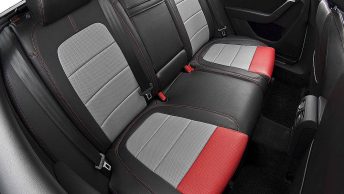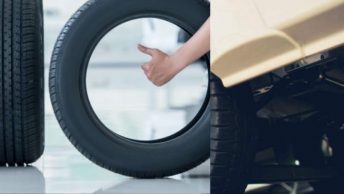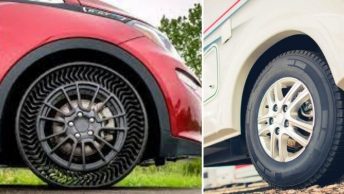Any highway will have many cars with roof racks or any other form of rooftop carriers. Some carry items (bikes, canoes, kayaks, etc.), but many are empty, and a good portion of those will most likely never carry anything.
A car rooftop carrier is an excellent way to transport additional gear on a summer road trip or a winter ski vacation. As they are otherwise known, these pods or racks allow you to increase the cargo capacity of your minivan or sedan without sacrificing passenger space.
However, installing these aerodynamically designed storage containers will significantly affect the fuel economy of your vehicle.
Many people notice a change in their fuel mileage after installing a roof rack, rooftop bag, or rooftop box.
This is due to additional weight on top of your vehicle and changes in the vehicle’s aerodynamics alongside other factors.
Aerodynamics is essential at highway speeds in that the more ‘slippery’ your vehicle is through the air, the less work your engine has to do to keep it moving, and the less work your engine has to do, the less fuel your vehicle consumes. This article discusses how roof racks are related to how much gas you use.

Roof Racks in Relation to Fuel Consumption.
A rooftop carrier on the top of your car is one of the many factors affecting your vehicle’s gas mileage. So, if you think your roof racks sydney are responsible for your increase in fuel consumption, you may be correct. Here are a few ways your roof rack can increase your fuel consumption.
Aerodynamic Drag
The drag coefficient is the primary metric observed during wind tunnel testing of a vehicle, though it is not the only important factor. The smaller this value, the smoother it is for a car to glide through the air. When you start attaching items to the top of a typically extremely aerodynamic vehicle, the co-efficient of drag rises, and everything you thought you knew about your car’s gas mileage vanishes. A study termed Fuel Consumption Impacts of Auto Roof Racks, conducted by Berkeley Lab research scientist Alan Meier and Yuche Chen of the National Renewable Energy Laboratory, analyzed the effect of attaching roof racks or other rooftop carriers to the top of light vehicles for the first time.
As a result, roof racks accounted for 0.8 percent of all light-vehicle fuel consumption in 2015. This equates to approximately 100 million gallons of gasoline.
The study, which was published in the journal Energy Policy, gathered data through online forums and crowdsourcing. Then, Meier and Chen created an energy-inventory model that took rack usage rates, vehicle miles traveled, and fuel consumption, both with and without the rack loaded.
Interestingly, they discovered that while aerodynamic drag significantly increased fuel consumption with a loaded rack, there was still a significant difference with an empty shelf, indicating that owners would benefit from removing frames when not in use.
The authors propose that racks be made more aerodynamic to reduce their impact on fuel consumption and that they should be made easier to install and remove.
According to the study, the additional fuel consumption caused by roof racks is approximately six times greater than expected fuel cell vehicles and 40 percent of anticipated fuel savings from battery electric vehicles in 2040.
Furthermore, because the researchers determined that roof-rack usage is expected to increase by up to 200 percent by 2040, owing primarily to growing national travel trends, measures to make them more aerodynamic and convenient to use would result in significant cost savings for consumers.
Conclusively, drag directly affects fuel consumption, and adding any amount of weight to your vehicle will always cause it to extract more, causing you to use more gas and get less-than-ideal gas mileage.
Even extra weight inside your vehicle can increase the amount of fuel your car consumes because it doesn’t matter where the excess weight is – it only matters that it’s there.

Dimensions and Design
The size and design of the carrier will always affect how much additional fuel is used, but suffice it to say that even a smaller page attached to your vehicle can cause your gas mileage to continually decrease.
Even if your roof rack is empty and has no items inside, it can still reduce your gas mileage by about 4-5 miles per gallon.
If you have an empty rooftop carrier on your vehicle, you can quickly reduce your mileage to 20 miles per gallon. Thus, it is evident that a rooftop carrier always directly impacts your gas mileage, which is something to consider when deciding whether a rooftop carrier is a good idea.
Air Flow
When you add a rooftop carrier, your vehicle becomes a little “boxier,” which means the air won’t flow as well over the top of the car, and, as a result, your gas mileage will be a little worse.
Conclusion
Although many of these carriers are specifically designed to reduce fuel consumption and provide better gas mileage, having a rooftop carrier will always cause you to use more fuel in the end.
Thus it’s advised to uninstall and leave your roof rack at home if you will not be transporting items.







